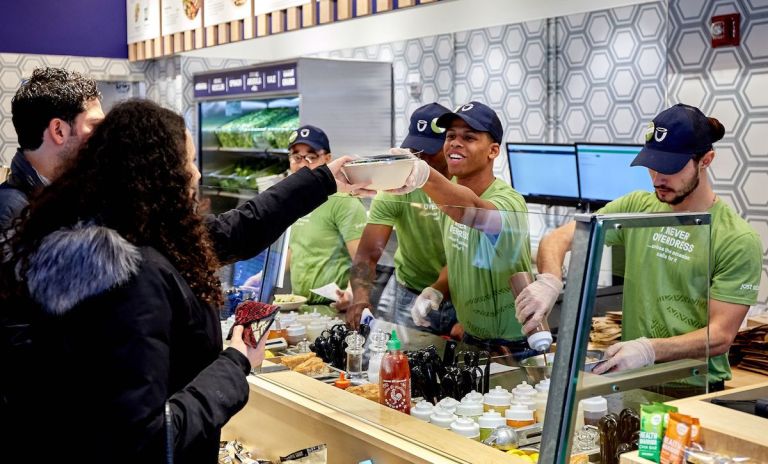Restaurants Step Up Rewards as Consumers Pull Back

As restaurants try to prevent inflation-concerned consumers from trading down, many brands are becoming more aggressive in their rewards and deal offers in an effort to keep diners coming back.
“With some of the macroeconomic trends ahead, I think it would make sense if rewards programs started to become more generous, and more restaurants are participating in them,” Or’el Anbar, director of analytics at fast-casual chain Just Salad, told PYMNTS in an interview. “Because it’s easy to roll out to a lot of point-of-sale systems and use the technology restaurants already have in place to now offer rewards functionality, and customers are going to be looking for value.”
The salad chain, for its part, announced the launch of its new “Race to Rewards” program earlier this month, per an emailed press release, which offers discounts when members complete “challenges,” much like competitor Sweetgreen’s Rewards and Challenges program.
Inflation is affecting how consumers engage with restaurants, and price-focused rewards could be key to easing their anxieties. Research from the August edition of PYMNTS’ Consumer Inflation Sentiment study, “Consumer Inflation Sentiment: Inflation Slowly Ebbs, but Consumer Outlook Remains Gloomy,” revealed that, in response to inflation, 78% of consumers are eating at home more. Plus, 38% reported they are opting more for lower-priced restaurants.
These decisions come as restaurant prices inflate well above the cross-category average, although still less than grocery prices. Data from the U.S. Bureau of Labor Statistics (BLS) revealed that, while prices for all items were up 7.7% in October, restaurant prices increased 8.6%, and grocery prices jumped 12.4%.
Yet, Anbar conceded that, while boosting rewards may be necessary in this challenging period to maintain relationships with diners that will last into the future, doing so will “create this tricky dynamic,” highlighting the tension between “what customers are willing to pay for items and what restaurants want to be able to command for a price point.”
Consequently, Jennifer Lally, vice president of marketing at Just Salad, told PYMNTS that personalization can be key to helping restaurants meet this demand for deals more effectively, getting more bang for their rewards buck.
Indeed, according to data from the March/April edition of PYMNTS’ Digital Divide series, “The Digital Divide: Regional Variations in U.S. Food Ordering Trends and Digital Adoption,” 58% of loyalty program members cited customized coupons or discounts as a reason for using these programs at quick-service restaurants (QSRs). Plus, 55% said the same of full-service restaurants (FSRs).
“What we’re trying to do, and I think other restaurants are as well, is moving toward this exclusivity- and experience-driven programs, and really turning loyal customers into VIPs,” Lally said, “almost taking a page from the book of what airlines have done in the past.”